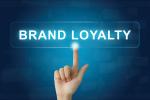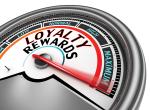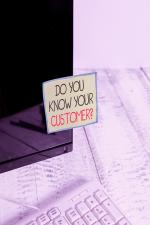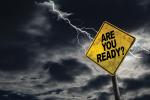LOS ANGELES — Letting people know what your drycleaning business does, why you do it better than the competition, and how you can make their lives better is key to bringing in customers and keeping them coming back. These are the essential building blocks of an effective marketing plan.
Patty Ross shared this advice during her recent Service Corps of Retired Executives (SCORE) webinar, “How to Create a Marketing Plan for Your Small Business.” She is a social media expert, brand manager and business marketing advisor at Golden State Marketing here in Los Angeles.
In Part 1 of this series, we looked at the importance of planning a marketing strategy and using SWOT analysis and a company’s unique selling proposition (USP) to provide the necessary information. Today, we’ll examine how to identify and understand a company’s ideal customers through the use of brand archetypes and buyer personas.
Who is Your Business?
One way to determine a company’s marketing “voice” is to assign it a brand archetype.
“Brand archetypes represent your business’ personality as human character traits and how you communicate with customers,” Ross says. “They help you emotionally connect to your audience. They can help a business stand out from competitors and help owners with the consistency of their marketing and message.”
Ross listed a dozen brand archetypes — Outlaw, Creator, Magician, Hero, Lover, Jester, Everyman, Caregiver, Ruler, Innocent, Sage and Explorer. Of these archetypes, two are particularly relevant for dry cleaners:
The Caregiver — Motto: “Love Your Neighbor as Yourself.” This archetype focuses on protecting and caring for others. It’s characterized by selflessness and putting others first. For dry cleaners, this might mean emphasizing their role in preserving and protecting valuable garments, with messaging that focuses on trust, expertise and careful handling of customers’ belongings. “To appeal to your customers,” Ross says, “you must make them feel safe and cared for.”
The Everyman — Motto: “You’re Just Like Me and I’m Just Like You.” This archetype emphasizes reliability, accessibility and belonging. It’s about being friendly, approachable and relatable. A dry cleaner using this archetype might focus on being the neighborhood’s trusted cleaner, emphasizing convenience and consistent quality at reasonable prices. “To appeal to your customer, you must make them feel a sense of belonging,” Ross says. “Brands that revolve around everyday activities might use this.”
Who are Your Customers?
While brand archetypes define a company’s personality, buyer personas offer a representation of particular types of customers.
“A buyer persona is a semi-fictional representation of your ideal customer based on market research and real data about your existing customers,” Ross says. This way, small-business owners can market to people rather than the abstract concept of “consumers.”
She outlines key elements to consider when constructing this “ideal customer”:
- Demographics (age, income, profession)
- Location and lifestyle
- Values and fears
- Goals and challenges
- Communication preferences
- Media consumption habits
Ross recommends multiple methods for research in constructing these personas:
- Customer interviews or surveys
- Gathering insights from business/digital data
- Gathering buyer persona data from marketing research
- Exploring the audiences of the biggest industry players
- Gathering social media insights to provide demographic information, interests, etc.
- Asking ChatGPT (paid version only) to evaluate the dry cleaner’s website and see what suggestions it comes up with
The Buyer’s Journey
To design a marketing plan, it’s important for an owner to be able to put themselves in their customer’s shoes and see how they make the decision to not only go to a dry cleaner, but to go to their drycleaning business.
Ross says there are three crucial stages in the buyer’s journey:
Awareness — “The customer has a problem they are looking to solve, and needs to learn about potential solutions,” she says. Marketing content at this stage might include blog posts, newsletters and educational materials.
Interest — “There are potential options we’re still exploring, and we’re looking at the different benefits,” Ross says. This stage calls for case studies, demonstrations and detailed service information.
Decision — “I’ve completed the research, and I’m trying to make a final decision,” she says. Here, prospects need proposals, consultations and clear pricing.
Marketing should also craft messages that prompt immediate interest, and she contrasts two approaches.
Weak: A simple list of services and qualifications.
Strong: “This is who I serve,” she says. “This is their problem, this is the solution I provide and this is the outcome.”
Most importantly, Ross stresses that marketing should always be focused on the customer.
“Make it about them,” she says. “What’s their problem? What’s the solution? Most of my clients who hire me don’t care how I do it. As long as I don’t do anything illegal and spend over their budget, they just want it to work.”
Come back Thursday for the conclusion of this series, where we’ll explore how to build a brand, create a marketing budget and measure the success of marketing efforts. For Part 1, click HERE.
Have a question or comment? E-mail our editor Dave Davis at [email protected].



























































































